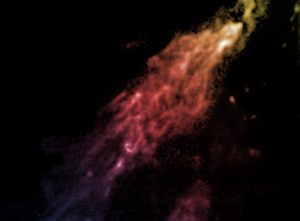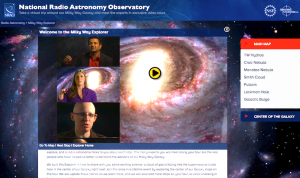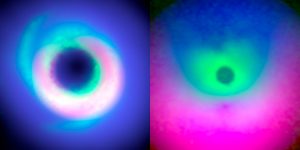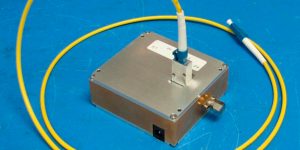ALMA and VLA team up with other observatories for best view ever of merging galaxies in the distant Universe.
Image Release: A Violent, Complex Scene of Colliding Galaxy Clusters
Astronomers using the Very Large Array and the Chandra X-Ray Observatory have produced a spectacular image revealing new details of violent collisions involving at least four clusters of galaxies.
Failed Dwarf Galaxy Survives Galactic Collision Thanks to Full Dark-Matter Jacket
A high-velocity hydrogen cloud hurtling toward the Milky Way appears to be encased in a shell of dark matter, according to a new analysis of data from the GBT.
The Milky Way Explorer
The latest NRAO Explorer interactive is a tour of our Milky Way Galaxy, with real astronomers as hosts, and provides exciting news about a supermassive black hole that is about the feed on an unlucky cloud of gas.
NRAO Media Tip Sheet: March 2014
Astronomers make distance measurement, GBT gets new spectrometer, and protoplanetary disks bulge are topics in March tip sheet.
NRAO Media Tip Sheet: February 2014
Merging galaxy clusters, big boost for big data, and exciting sessions at the 2014 AAAS meeting











